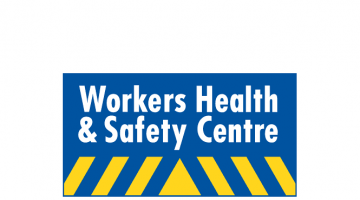Economic evaluations
Economic evaluations in health and safety calculate the costs and benefits of injury, illness and disability prevention programs, both workplace-based and at the systems level. IWH researchers not only answer questions about how and what to measure in an economic evaluation, but also conduct economic evaluations themselves as part of larger studies determining the effectiveness (in terms of both costs and other benefits) of occupational health and safety, return-to-work and other work-related programs that affect health.
Featured

At Work article
IWH estimates point to positive return on OHS investment in three Ontario sectors
An estimate of the return-on-investment in occupational health and safety is not a figure that many individual employers can easily come up with on their own. A team at IWH has come up with an estimate for three Ontario sectors, based on previous research and WSIB data.
Published: July 29, 2022

IWH in the media
Despite ban, asbestos lingers and takes a toll decades later
Because decades might pass before a person exposed to asbestos develops mesothelioma, asbestosis or the other related diseases, health professionals believe the number and costs of asbestos-related cancers and disease will continue to rise, writes Monique Keiran in a column that cites Institute research.
Published: Times Colonist, January 2019

IWH in the media
Research looks at cost-effectiveness in silica dust exposure fight
Personal protective equipment (PPE) is not always the most cost-effective means of protecting workers from dangers associated with exposure to silica dust, writes Don Proctor, reporting on the findings of an IWH study.
Published: Daily Commercial News, January 2019
Project
Project
Estimating the financial benefits of OHS prevention expenditures: a study of Ontario employers
Status: Completed 2022

IWH in the media
Research on silica exposure controls finds PPE comes at a cost
Research estimating cancers averted and intervention costs of two silica control measures offers an important new perspective on the control of occupational cancers. Among the compelling findings, researchers concluded that personal protective equipment (PPE) is not the most cost-effective method of protecting workers from silica exposures, calling into question the common practice of providing PPE to workers exposed to hazardous materials.
Published: Workers Health & Safety Centre, December 2018

At Work article
Calculating the costs of employers’ work-related injury prevention efforts in Ontario
You often hear OHS professionals and advocates talk about the costs of work-related injuries. But what about the costs of preventing the injuries? An IWH research team recently set out to calculate employer OHS investments in Ontario.
Published: November 2018
IWH Speaker Series
IWH Speaker Series
An impact analysis of two silica dust exposure reduction strategies
Crystalline silica dust exposure is common in the construction sector. Inhalation of silica dust is known to cause lung cancer, silicosis, chronic obstructive pulmonary diseases, rheumatoid arthritis and tuberculosis. In this presentation, Dr. Emile Tompa examines the implementation of two approaches to reducing exposure: use of personal protective equipment (i.e. respirators) by all exposed individuals and use of engineering controls (e.g. wet method) wherever and whenever feasible. He shares findings from an impact analysis based on data spanning 30 years.
Published: November 2018
Journal article
Journal article
Cost-benefit analysis of investment in occupational health and safety in Colombian companies
Published: American Journal of Industrial Medicine, October 2018

Issue Briefing
What do employers spend to protect the health and safety of workers?
While the financial costs of work-related injury and illness are well known, limited information is available on what employers spend to control or eliminate the causes of work-related injury and illness. This Issue Briefing describes the results of a 2017 study to estimate occupational health and safety expenditures among employers from 17 economic sectors in Ontario, Canada.
Published: September 2018
Journal article
Journal article
The economic burden of occupational non-melanoma skin cancer due to solar radiation
Published: Journal of Occupational and Environmental Hygiene, September 2018

At Work article
Benefits outweigh costs for workplaces that accommodate people with mental illness
For employers, the economic benefits of hiring and accommodating workers with mental illnesses range from two to seven dollars for every dollar spent. That's according to a new study on the business case of accommodating mental illnesses.
Published: July 2018